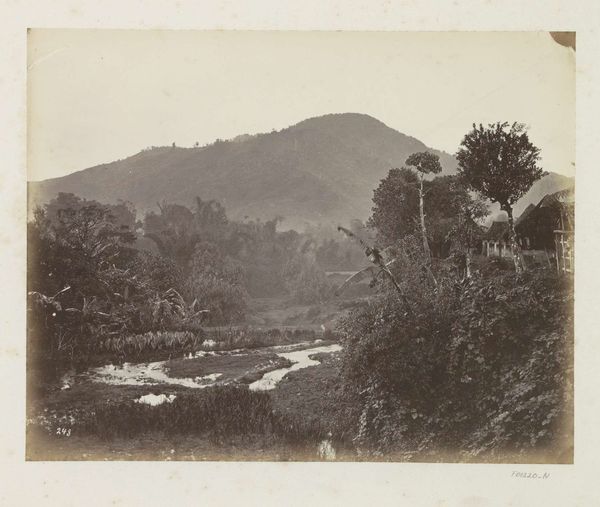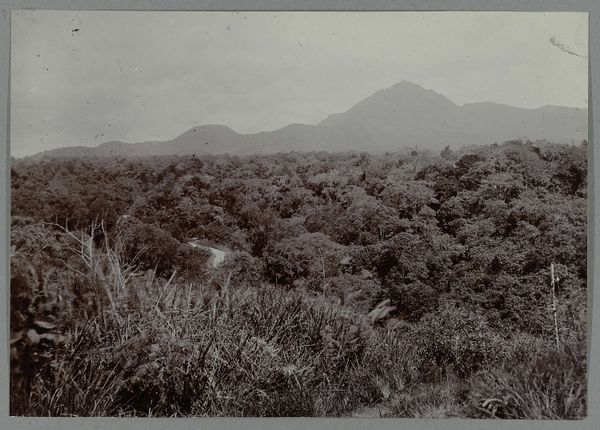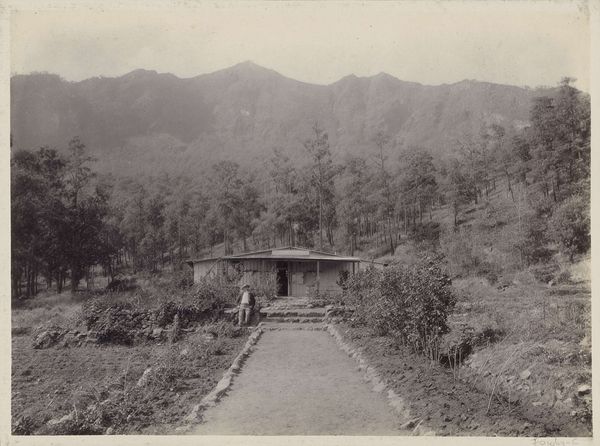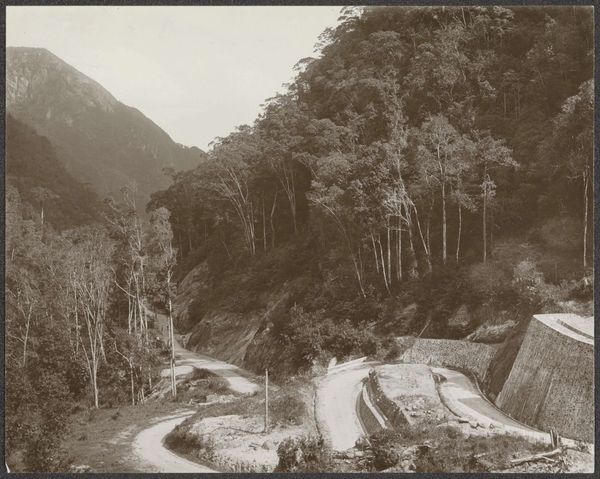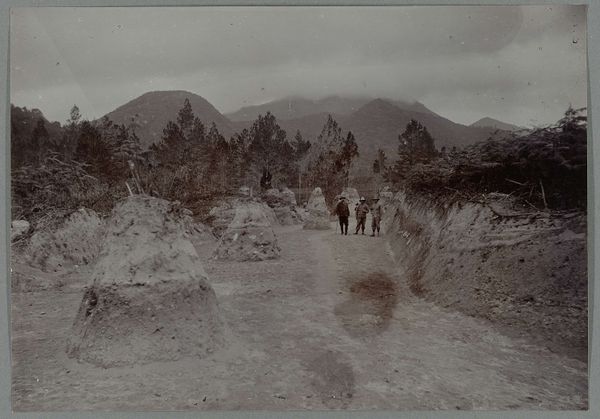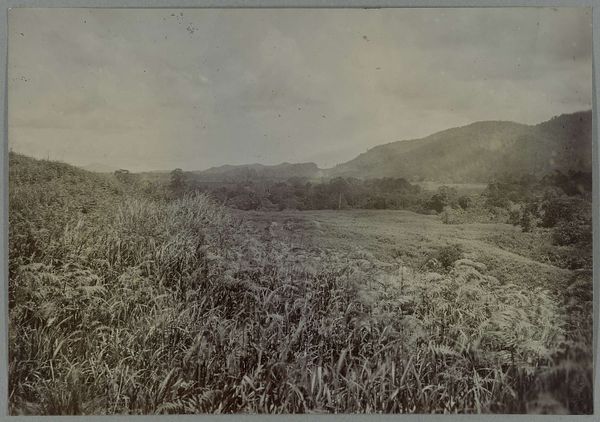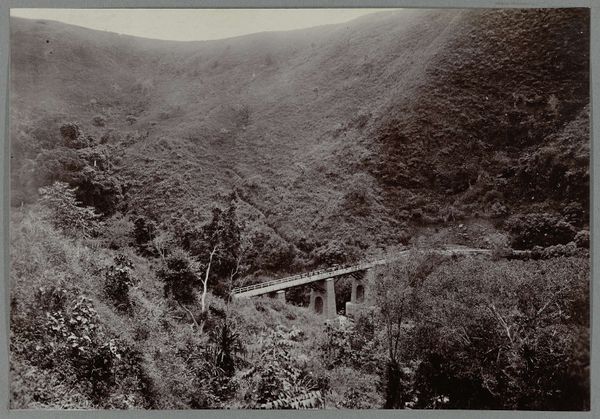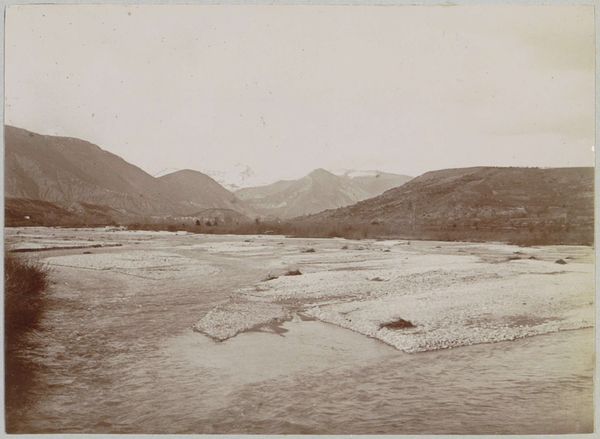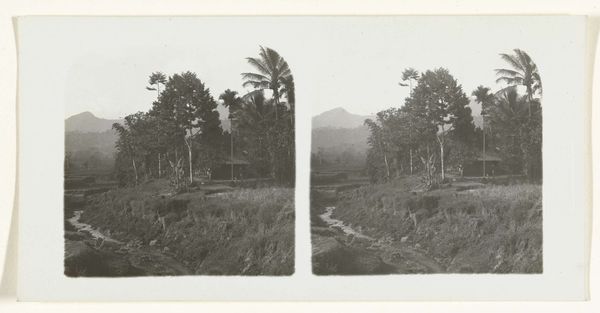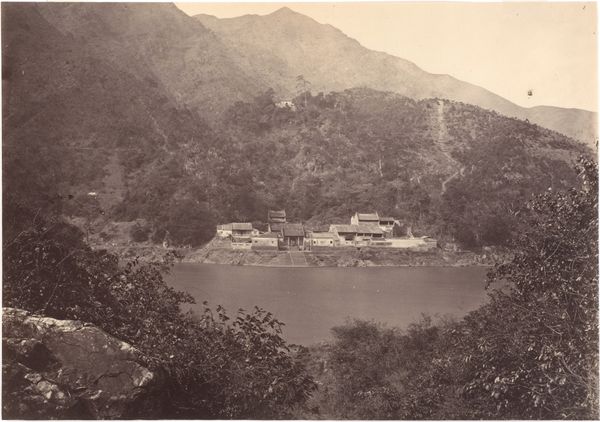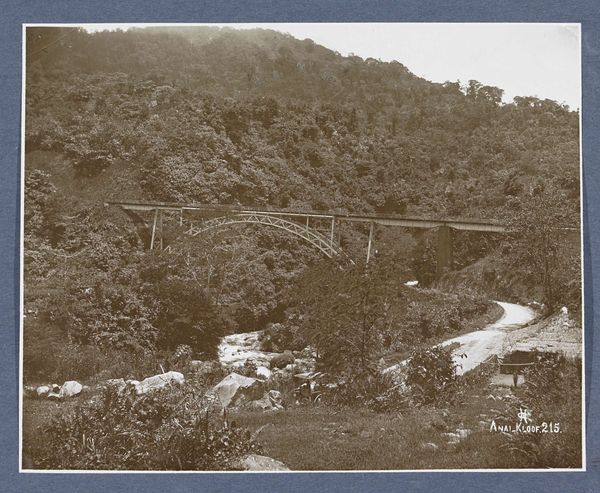
print, plein-air, photography
# print
#
plein-air
#
landscape
#
nature
#
photography
#
watercolor
Dimensions: height 138 mm, width 200 mm
Copyright: Rijks Museum: Open Domain
Editor: So, here we have an intriguing landscape, "Aanleg van de weg bij de Boer ni Poepandji," which translates to "Construction of the Road at the Farmer ni Poepandji's Place." It's dated sometime between 1903 and 1913. Given its muted tones and somewhat blurry quality, it seems likely this work was realized as a vintage print, maybe a photograph? What jumps out at me is the strong contrast between the dense foliage and what looks like active construction. How do you interpret this work? Curator: That contrast is precisely what captures my attention as well. The photograph, presumably taken en plein air, depicts a road being carved through a lush landscape. The implications here are substantial; think about the Dutch colonial presence and their infrastructural projects in the early 20th century. Who were those impacting, and whose labor was involved? What sort of landscape was this before it was transformed, ostensibly to further commercial interests? Editor: I see. So, the "progress" we're viewing isn't neutral; it has socio-political dimensions related to colonialism. Were these scenes commonly documented, or was there something unusual about capturing this specific moment? Curator: Images like this were sometimes used to promote the idea of bringing “civilization” and advancement through technology to colonised regions, subtly reinforcing notions of European superiority. But it's not always that straightforward. Think about the perspective from the photographer's point of view. Why this moment, why here? Perhaps it was meant to emphasize the grand engineering efforts, or simply a reflection of the changing landscape. But without context, that’s simply not enough to work on to give the viewer the full history here. Editor: That gives me a lot to consider. I initially saw it as just a landscape, but understanding its historical context as you explained unveils layers of meaning related to colonial impact and cultural perspectives that is pretty incredible, right? Curator: Exactly, It transforms a seemingly straightforward image into a potent visual commentary. Recognizing art’s place in broader cultural narratives adds profound richness.
Comments
No comments
Be the first to comment and join the conversation on the ultimate creative platform.
